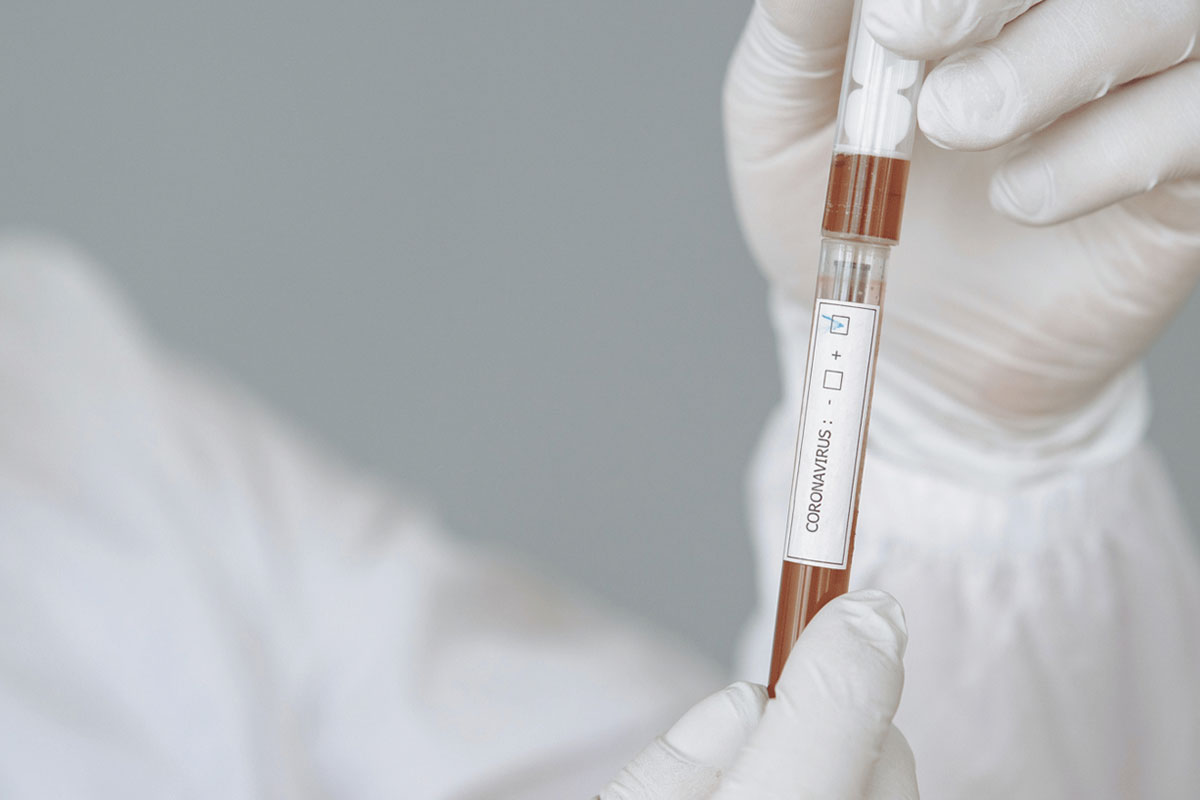Testing for active COVID-19 infection: PCR and Isothermal Amplification

Terms such as PCR, molecular testing, nucleic acid amplification test, isothermal amplification, and LAMP used to be discussed only by scientists and doctors. With the rise of the disease COVID-19 caused by the virus SARS-CoV-2, the public has become more aware of PCR, as that is the original molecular test for amplifying and detecting nucleic acids such as SARS-CoV-2 RNA, and the molecular test that has received the most media attention. With COVID lingering, while society moves forward toward a more functional state, multiple companies have generated contracts to hire COVID testing companies to regularly test their employees. However, the language used in these contracts often includes PCR but forgets to include another molecular test, isothermal amplification, that is similarly effective at amplifying and detecting nucleic acids while being cheaper and faster.
NAAT (Nucleic acid amplification testing) is the amplification and detection of the nucleic acids DNA or RNA. When testing a patient for active COVID infection, the test needs to detect RNA, because RNA is the genetic material of all coronaviruses. RNA is very unstable outside of the organism, so it can not undergo amplification without first utilizing an enzyme called reverse transcriptase to transcribe the RNA into cDNA (complementary DNA). This cDNA can then be amplified.
The classic, decades-old method of PCR is the original workhorse for amplifying nucleic acids. However, another type of NAAT is isothermal amplification, including the popular LAMP test.
PCR (polymerase chain reaction) amplifies and detects DNA by denaturing, annealing, and elongating increasing amounts of DNA in a chain reaction. Unless a user wants to spend hours repeatedly heating and cooling their samples manually, PCR requires the use of a thermal cycler to perform multiple repeated cycles of heating and cooling. In other words, PCR starts with a DNA sample and amplifies the DNA. Variations of PCR include:
RT-PCR (reverse transcription-polymerase chain reaction) detects the presence of RNA such as that of SARS-CoV-2 by reverse transcribing it to cDNA (complementary DNA). After the initial step of reverse transcription of RNA to cDNA, the remainder of the process is the same as PCR. In other words, RT-PCR starts with an RNA sample, utilizes a reverse transcriptase enzyme to create complementary DNA (cDNA), and then amplifies the cDNA.
qPCR (quantitative PCR or real-time PCR) is a method of PCR that enables the quantification of the abundance of nucleic acids during the exponential amplification phase relative to the abundance of other nucleic acids including controls. This differs from traditional PCR that gives a yes or no answer, without quantifying the relative abundance of nucleic acids.
RT-qPCR (reverse transcription-quantitative PCR, also known as reverse transcription real-time PCR) is a method of PCR that starts with an RNA sample, reverses transcribes the RNA to cDNA, amplifies the cDNA, and enables the relative quantification of cDNA during the exponential growth phase.
Isothermal amplification amplifies and detects nucleic acids at a constant temperature, eliminating the need for a thermal cycler. LAMP is a popular method of isothermal amplification.
LAMP (loop-mediated isothermal amplification) is an isothermal reaction that continuously amplifies nucleic acids at a constant temperature, eliminating the need for a thermal cycler. LAMP is faster than PCR, producing higher levels of nucleic acids than PCR within minutes. LAMP can also amplify and detect nucleic acids from crude samples without purification, such as saliva, although crude sample analysis has a lower percentage of accuracy than refined samples.
RT-LAMP (reverse transcription loop-mediated isothermal amplification) detects the presence of RNA such as that of SARS-CoV-2 by first reverse transcribing RNA to cDNA.
SARS-CoV-2 is an RNA virus, so molecular testing for COVID infection via PCR or LAMP is performed with RT-PCR or RT-LAMP.
Notably, a recent literature review illustrates the high accuracy of both PCR and isothermal amplification including LAMP in diagnosing human coronavirus infections: https://www.nature.com/articles/s41598-020-79237-7
Because LAMP has been shown to be comparably effective and accurate to PCR at detecting nucleic acids, while also being faster, cheaper, and omitting the need for a thermal cycler, the scientific community accepts both RT-PCR and RT-LAMP as valid tests for the detection of COVID infection. However, accuracy may vary from one test manufacturer to another.
When choosing a COVID-19 infection test from among the plethora of tests that have received FDA Emergency Use Approval, an important criterium is not whether the test is PCR or isothermal amplification such as LAMP, but the quality of the test data.
Does the published test data display high degrees of specificity and sensitivity? Multiple PCR and LAMP COVID-19 tests with FDA Emergency Use Authorization (EUA) boast specificity and sensitivity values in the mid to high 90s.
It is also important to look at cross-reactive controls. For example, does the test also detect any of the common human coronaviruses that are present in about 90% of the human population, or is the detection specific to SARS-CoV-2? The less stringent the cross-reaction testing, the higher the possibility of false positives.
Additionally, the specificity of the test’s viral target is important. For example, some tests’ SARS-CoV-2 targets for detection are nearly identical to other common coronaviruses, whereas other tests’ SARS-CoV-2 targets are uniquely different from other organisms. (Although many targets unique to SARS-CoV-2 also react with SARS-CoV, this isn’t an issue because SARS-CoV is not believed to be circulating in the population at this time.)
Also, technical test parameters, including the limit of detection (LoD), can make a difference regarding the quality of the test. For example, the sensitive assays claim an LoD of about 100 copies of viral RNA per milliliter. However, the LoD of assays may be 10,000 fold higher. The higher the LoD, the higher the possibility of false negatives.
Finally, the number and quality of samples that were used to verify the test are important. For example, an assay that was tested with 500 samples from COVID-19 positive patients and 500 COVID-19 negative patients will have more accurate results than an assay that was tested with 25 positive and 25 negative patients. In another example, 60 samples that are actually 3 replicates of 20 patients will give less accurate results than 60 samples from 60 patients. In a third example, spiked samples (samples that are not patient samples, but rather samples that are spiked with the virus) are not truly independent samples.
In summary, PCR and isothermal amplification such as LAMP are two of the most popular methods of nucleic acid amplification that are highly effective at detecting active COVID-19 infection.
